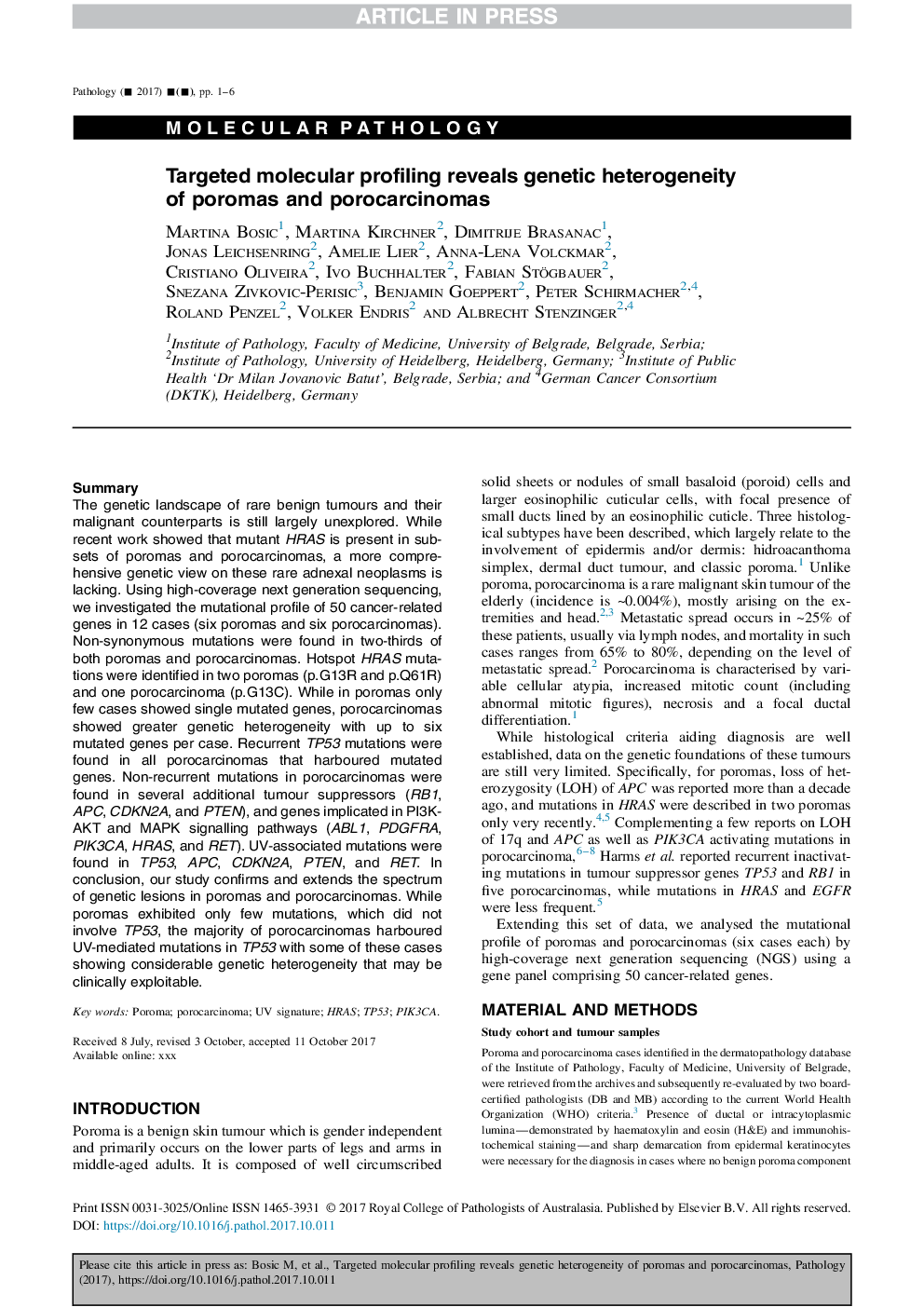| Article ID | Journal | Published Year | Pages | File Type |
|---|---|---|---|---|
| 6555520 | Pathology | 2018 | 6 Pages |
Abstract
The genetic landscape of rare benign tumours and their malignant counterparts is still largely unexplored. While recent work showed that mutant HRAS is present in subsets of poromas and porocarcinomas, a more comprehensive genetic view on these rare adnexal neoplasms is lacking. Using high-coverage next generation sequencing, we investigated the mutational profile of 50 cancer-related genes in 12 cases (six poromas and six porocarcinomas). Non-synonymous mutations were found in two-thirds of both poromas and porocarcinomas. Hotspot HRAS mutations were identified in two poromas (p.G13R and p.Q61R) and one porocarcinoma (p.G13C). While in poromas only few cases showed single mutated genes, porocarcinomas showed greater genetic heterogeneity with up to six mutated genes per case. Recurrent TP53 mutations were found in all porocarcinomas that harboured mutated genes. Non-recurrent mutations in porocarcinomas were found in several additional tumour suppressors (RB1, APC, CDKN2A, and PTEN), and genes implicated in PI3K-AKT and MAPK signalling pathways (ABL1, PDGFRA, PIK3CA, HRAS, and RET). UV-associated mutations were found in TP53, APC, CDKN2A, PTEN, and RET. In conclusion, our study confirms and extends the spectrum of genetic lesions in poromas and porocarcinomas. While poromas exhibited only few mutations, which did not involve TP53, the majority of porocarcinomas harboured UV-mediated mutations in TP53 with some of these cases showing considerable genetic heterogeneity that may be clinically exploitable.
Keywords
Related Topics
Health Sciences
Medicine and Dentistry
Forensic Medicine
Authors
Martina Bosic, Martina Kirchner, Dimitrije Brasanac, Jonas Leichsenring, Amelie Lier, Anna-Lena Volckmar, Cristiano Oliveira, Ivo Buchhalter, Fabian Stögbauer, Snezana Zivkovic-Perisic, Benjamin Goeppert, Peter Schirmacher, Roland Penzel, Volker Endris,
